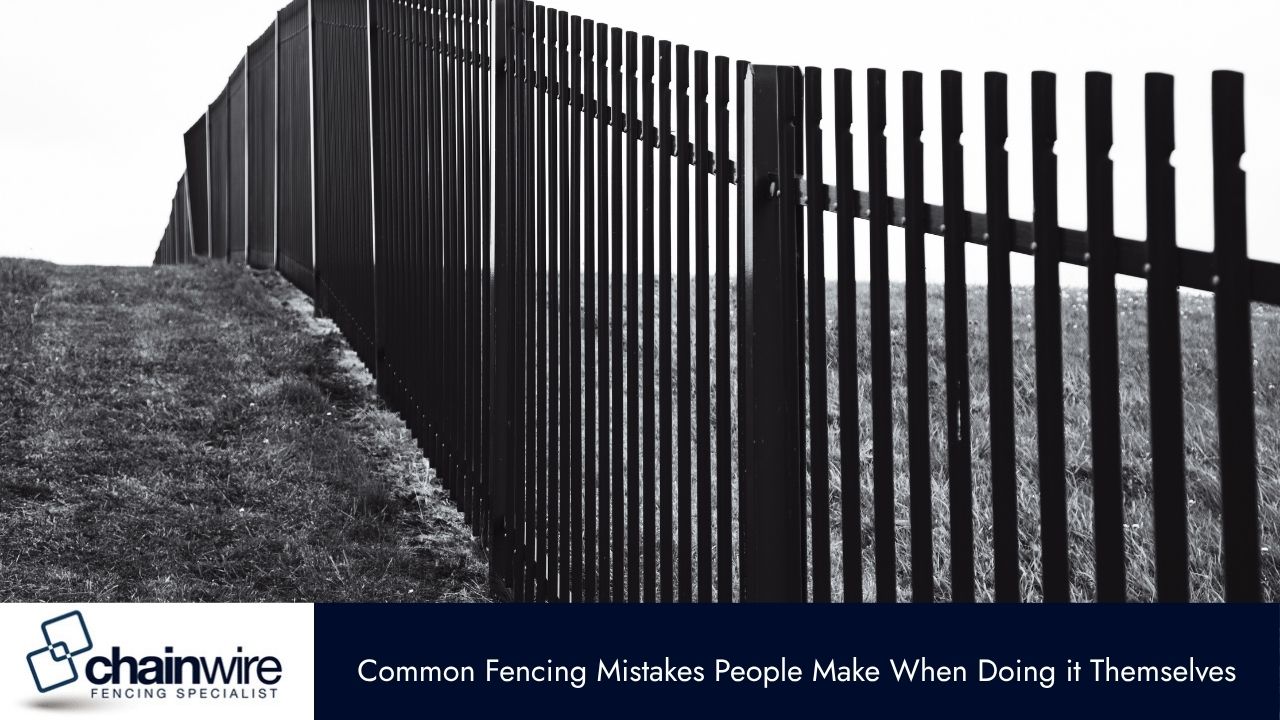Many people attempt to build their own fences without fully preparing. Common mistakes include setting posts too shallow, using the wrong materials, or placing fences across boundaries without confirmation.
These errors don’t just affect appearance—they lead to weak structures, erosion problems, and disputes with neighbours. In most cases, repairs or full rebuilds end up costing more than the original materials. What starts as a budget-saving project becomes a time-consuming fix.
This article outlines the most common fencing mistakes made during DIY installations. Each section explains what goes wrong, why it happens, and how to avoid it. Use this as a guide to complete your fencing project without setbacks or extra costs.
Choosing a Fence That Doesn’t Suit the Site
Fences serve different purposes—privacy, security, livestock containment, or simply marking a boundary. A common mistake is selecting a style based solely on appearance or cost, without considering the conditions of the property or the intended use.
Before selecting materials, check local council rules about height, placement, and appearance. Some regions require permits or supervision from licensed professionals. Also consider whether the fence is exposed to wind, salt, water, or heavy impact.
Timber may be fine for backyard screening but not for high-traffic or animal areas. Galvanised steel or chainwire works better in coastal or rural areas where long-term durability matters more than aesthetics.
Choosing the right fence at the start avoids costly changes later and ensures the structure will last.
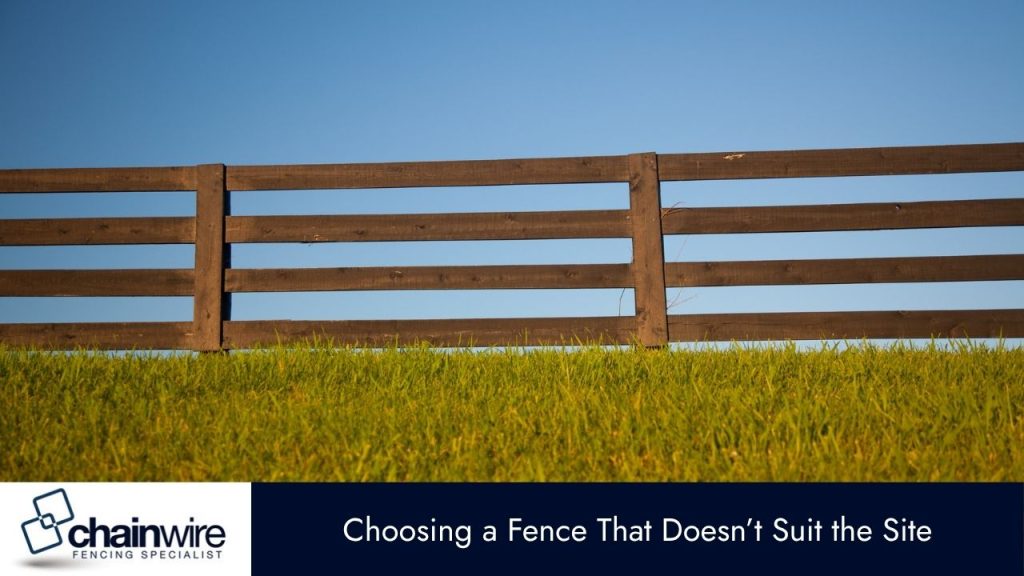
Poor Anchor Post Installation
Anchor posts carry the most pressure in a fence. These are usually positioned at corners, ends, and gates. If they aren’t set deep enough or secured properly, the entire fence can sag or lean over time.
Anchor posts should be larger in diameter and longer than line posts. They need to be installed deep enough to resist soil movement and hold tension from mesh or panels. Concrete footings help keep them stable, especially in loose or wet ground.
Rushing through this step or underestimating soil movement often leads to failed fences that need full removal and rebuilding.
Poor Gate Placement
A gate might look good where it’s easy to install—but that doesn’t always make it functional. It needs to support foot and vehicle access, resist water pooling, and avoid uneven terrain.
Common oversights include placing gates in low spots that collect water or too close to obstructions like trees or driveways. Think about the movement through the gate, including trailers or equipment. Measure swing clearance and plan for proper drainage using gravel or compacted fill.
Even a simple gate needs careful planning, as repositioning it later may require shifting fence lines or redoing posts.
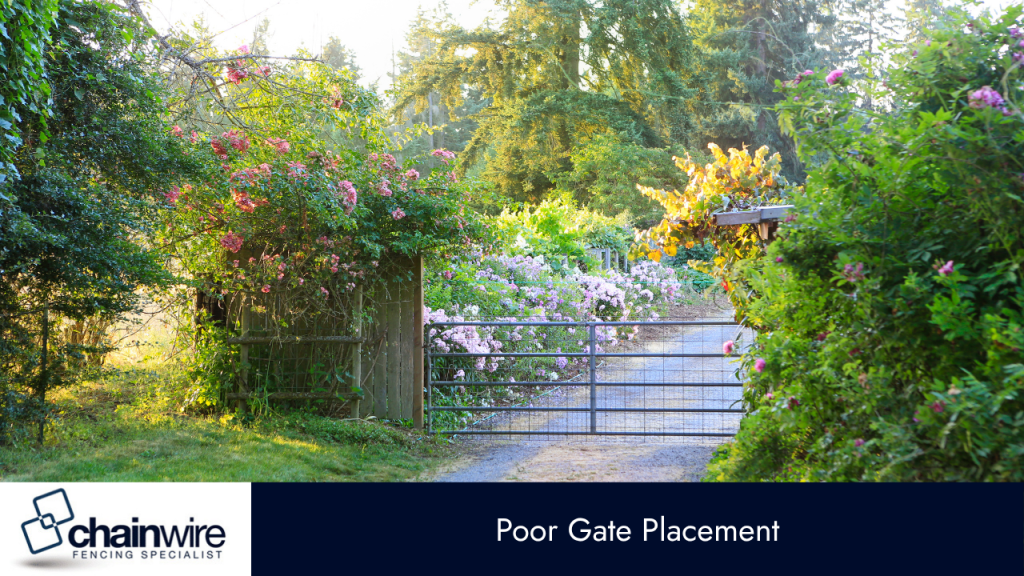
Skipping a Property Survey
Assuming you know where the boundary lies without checking can lead to major issues. Many fences are built over property lines, across driveways, or onto easements—often by mistake.
Hire a licensed surveyor to verify the exact line before digging. Property pins may be missing or buried, and easement rights aren’t always clear from visual cues. Even if neighbours are friendly now, disputes later can lead to forced removal or legal costs.
Confirming boundary lines at the start prevents accidental encroachment.
Digging Without Checking Underground Services
Underground services like water, gas, electricity and communication lines often run beneath properties. Digging without checking can cause service outages, equipment damage or safety risks, especially when using steel posts or augers.
In most fencing projects, this step is already handled as part of the preparation. A utility check is done using specialised equipment to detect buried lines before any excavation starts.
- Prevents damage to essential underground infrastructure
- Reduces the risk of delays, injuries or unexpected repair work
- Ensures safer post installation and more reliable project outcomes
Skipping this step increases the chance of costly disruptions. It should always be completed before setting posts.
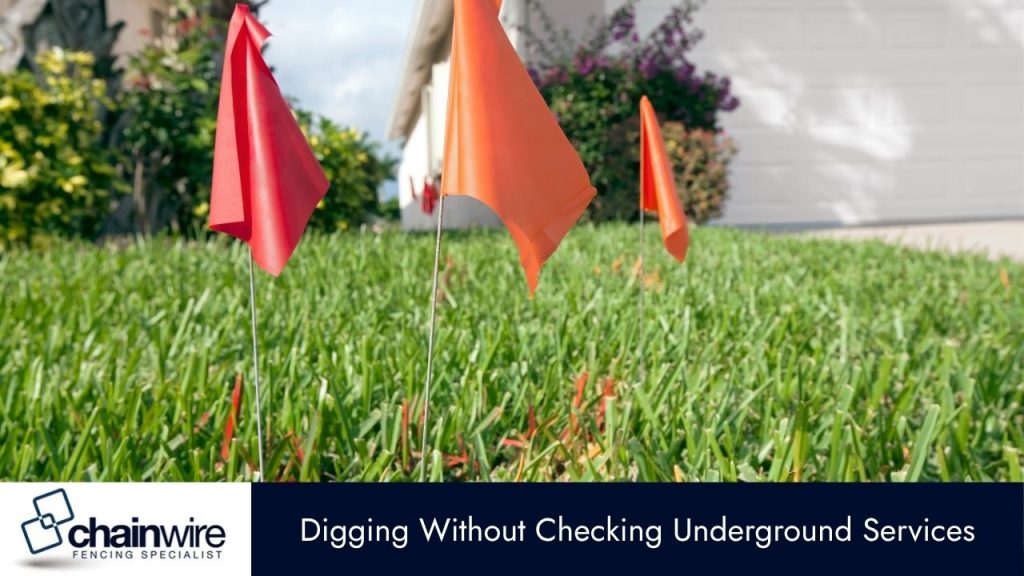
Using Incompatible Materials for Soil and Weather
Timber fences can rot quickly in wet ground. Untreated steel rusts near saltwater or in high humidity. Installing the wrong materials for the site leads to premature failure and extra maintenance.
Treated pine or hardwood posts last longer in damp areas, while galvanised or PVC-coated steel suits coastal and windy zones. If your land has slopes, you’ll need panels that can step or follow the contour using a raked design.
Matching the material to the site avoids short-term repairs and long-term structural failure.
Not Using Enough Posts
Spacing posts too far apart is a common mistake that weakens the entire structure. It may save on materials but leads to flexing panels, sagging mesh, or collapsed sections.
Use the correct spacing based on the fence type:
- Timber or paling fences should have posts spaced between 2.4 and 3 metres.
- Chainwire fences need posts every 3 metres, with bracing at corners and gate openings.
- Colorbond or steel panel fences must follow the manufacturer’s spacing requirements to maintain warranty.
Wind and soil conditions can place extra pressure on poorly spaced posts. Always plan your layout based on actual site demands, not estimates.
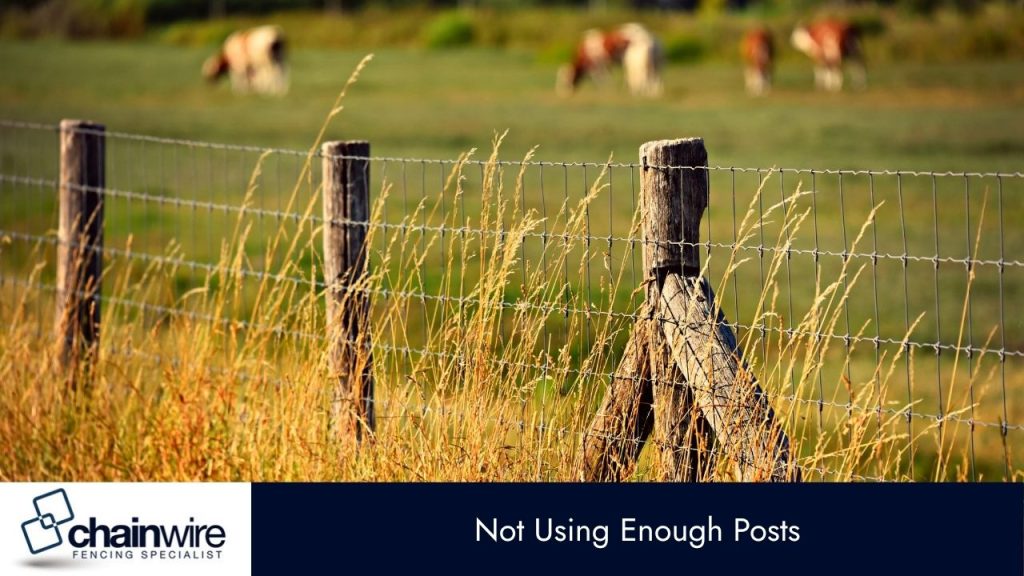
Skipping Chainwire Tensioning and Hardware
Chainwire fencing looks simple but needs precise tensioning to stay upright and secure. Without correct fittings and tensioning tools, the mesh loosens over time and loses its purpose.
Use turnbuckles or straining rods at ends to keep the mesh tight. Secure mesh along the base with wire or rail to prevent lifting. At corners and gates, use diagonal bracing or strainer posts to spread the load evenly.
For sport areas or high-impact zones, view our overview of tennis court fencing applications to see how proper tension and framing improve longevity.
Final Advice from Chainwire Fencing
A fence is only as reliable as the planning behind it. Skipping key steps or using the wrong materials leads to weak structures, wasted effort, and costly fixes.
At Chainwire Fencing Newcastle, we work with property owners, contractors, and site managers to prevent these mistakes. From boundary checks to material selection, we provide clear guidance based on real site conditions.
If you want a fence that holds up long term—whether it’s for acreage, commercial use, or secure enclosures—reach out to our team. We’ll help you plan it properly and get it done right.
Request a quote today to get started.

